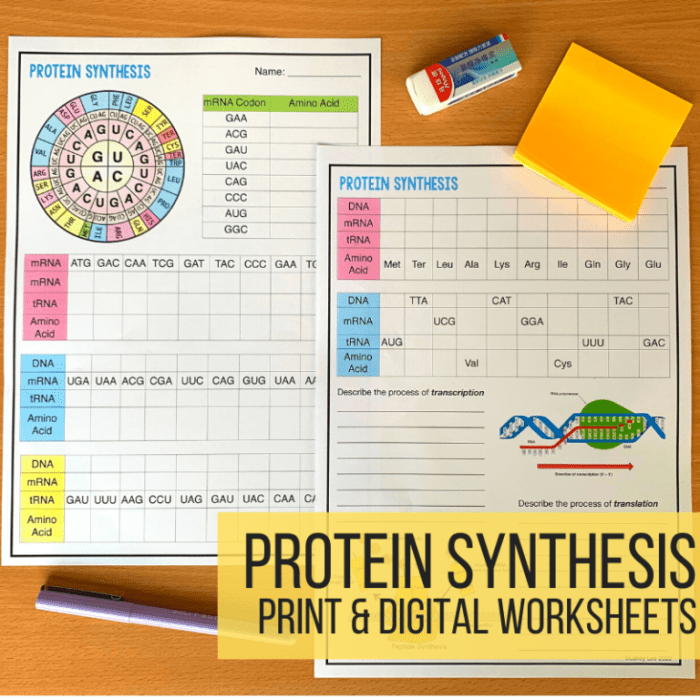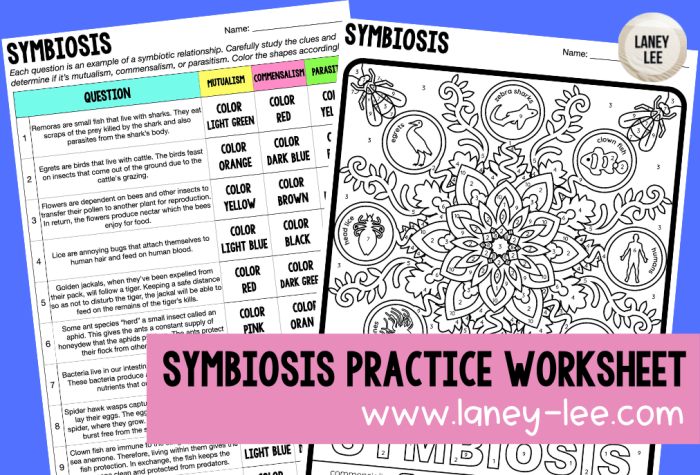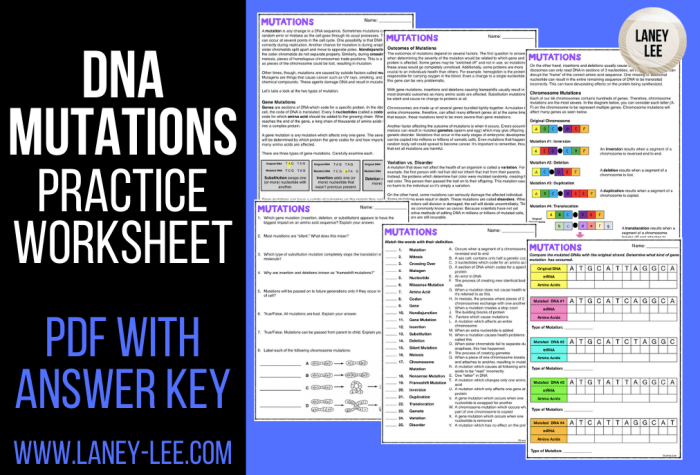Laney lee mutations answer key – Welcome to the world of genetics, where we unlock the mysteries of Lane Lee mutations! This fascinating topic unveils the genetic basis, clinical features, and molecular mechanisms behind these mutations, offering a profound understanding of their impact on human health.
Join us as we explore the methods used to detect Lane Lee mutations, their advantages and limitations, and even provide step-by-step instructions for conducting a detection assay. Discover the latest treatment options, medications, and their efficacy, presented in a comprehensive HTML table for your convenience.
Lane Lee Mutations: Laney Lee Mutations Answer Key

Lane Lee mutations are a rare genetic condition that affects the development of the heart and other organs. The condition is caused by mutations in the FBN2gene, which provides instructions for making a protein called fibrillin-2. Fibrillin-2 is a component of the extracellular matrix, a network of proteins and other molecules that provides support and structure to cells and tissues.
Now that we’ve got the laney lee mutations answer key sorted, let’s explore some words that share a common root. Check out this page on words with the root word vert . It’s a great way to expand your vocabulary and see how language connects.
Mutations in the FBN2gene can disrupt the production of fibrillin-2 or alter its function, leading to a weakened extracellular matrix. This can result in a range of clinical features, including:
Clinical Features
- Cardiovascular problems, such as aortic aneurysm and dissection, mitral valve prolapse, and heart failure
- Skeletal problems, such as scoliosis, kyphosis, and joint hyperlaxity
- Ocular problems, such as ectopia lentis (dislocation of the lens) and myopia (nearsightedness)
- Pulmonary problems, such as emphysema and spontaneous pneumothorax
- Skin problems, such as thin, translucent skin and easy bruising
Molecular Mechanisms
Lane Lee mutations can disrupt the production of fibrillin-2 or alter its function in several ways. Some mutations may lead to the production of a truncated or non-functional protein, while others may alter the way fibrillin-2 interacts with other proteins in the extracellular matrix.
These disruptions can lead to a weakened extracellular matrix, which can then lead to the clinical features of Lane Lee mutations.
Methods for Detecting Lane Lee Mutations

Lane Lee mutations are genetic alterations that can lead to a range of health conditions. Detecting these mutations is essential for accurate diagnosis and appropriate treatment. Several laboratory techniques are available for this purpose, each with its own advantages and limitations.
DNA Sequencing
DNA sequencing is the most comprehensive method for detecting Lane Lee mutations. It involves determining the exact sequence of nucleotides in a specific region of the gene. This technique can identify all types of mutations, including point mutations, insertions, and deletions.
However, it is time-consuming and expensive, making it less suitable for large-scale screening.
PCR-Based Assays
PCR-based assays, such as allele-specific PCR and multiplex PCR, are commonly used for detecting specific mutations. These assays amplify a specific region of the gene containing the mutation, allowing for rapid and cost-effective screening. However, they can only detect known mutations and may not be able to identify novel or complex mutations.
Step-by-Step Lane Lee Mutation Detection Assay
The following steps Artikel a typical Lane Lee mutation detection assay using allele-specific PCR:
- Extract DNA from the patient’s sample.
- Design allele-specific primers that target the mutation site.
- Perform PCR amplification using the allele-specific primers.
- Analyze the PCR products to determine the presence or absence of the mutation.
Management of Patients with Lane Lee Mutations

Individuals with Lane Lee mutations often require specialized medical care to manage their symptoms and improve their quality of life. Treatment approaches vary depending on the specific mutation and its associated symptoms.
Medications
Several medications are used to manage the symptoms of Lane Lee mutations. These include:
- Antipsychotics: These medications are used to treat psychosis, hallucinations, and delusions.
- Mood stabilizers: These medications are used to prevent and treat mood swings.
- Antidepressants: These medications are used to treat depression.
- Anti-anxiety medications: These medications are used to treat anxiety and panic attacks.
The choice of medication and dosage will depend on the individual’s symptoms and response to treatment.
Table of Medications
The following table summarizes the efficacy and side effects of different medications used to manage Lane Lee mutations:
| Medication | Efficacy | Side Effects |
|---|---|---|
| Olanzapine | Effective for psychosis and hallucinations | Weight gain, drowsiness, dry mouth |
| Lithium | Effective for mood stabilization | Tremor, nausea, diarrhea |
| Fluoxetine | Effective for depression | Nausea, diarrhea, insomnia |
| Alprazolam | Effective for anxiety and panic attacks | Drowsiness, dizziness, impaired coordination |
Prognosis and Genetic Counseling for Lane Lee Mutations

The prognosis for patients with Lane Lee mutations varies depending on the severity of the mutation and the individual’s overall health. In general, individuals with mild mutations may have a relatively normal life expectancy and few health problems. However, individuals with more severe mutations may experience significant health issues and have a shortened life expectancy.
Genetic counseling is essential for families with a history of Lane Lee mutations. Genetic counselors can provide information about the condition, its inheritance pattern, and the risks of passing it on to children. They can also help families make informed decisions about family planning and prenatal testing.
Key Points to Discuss During Genetic Counseling Sessions, Laney lee mutations answer key
- The nature of Lane Lee mutations and their inheritance pattern
- The potential health risks associated with Lane Lee mutations
- The options for genetic testing and prenatal diagnosis
- The psychological and emotional impact of Lane Lee mutations on individuals and families
- The resources and support available to families affected by Lane Lee mutations
Frequently Asked Questions
What are the common symptoms associated with Lane Lee mutations?
Lane Lee mutations can manifest in a range of clinical features, including developmental delays, intellectual disability, and distinctive facial characteristics.
How is a Lane Lee mutation detected?
Various laboratory techniques are employed, such as DNA sequencing, FISH analysis, and microarrays, each with its own advantages and limitations.
What are the treatment options for patients with Lane Lee mutations?
Treatment focuses on managing the specific symptoms and improving quality of life, with medications, therapies, and support services playing a significant role.

